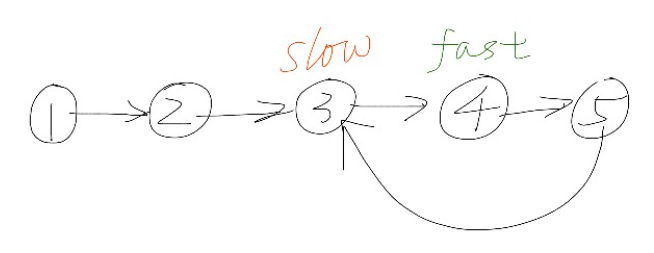-
Preface
- FAQ
-
Part I - Basics
- Basics Data Structure
- Basics Sorting
- Basics Algorithm
- Basics Misc
-
Part II - Coding
- String
-
Integer Array
-
Remove Element
-
Zero Sum Subarray
-
Subarray Sum K
-
Subarray Sum Closest
-
Recover Rotated Sorted Array
-
Product of Array Exclude Itself
-
Partition Array
-
First Missing Positive
-
2 Sum
-
3 Sum
-
3 Sum Closest
-
Remove Duplicates from Sorted Array
-
Remove Duplicates from Sorted Array II
-
Merge Sorted Array
-
Merge Sorted Array II
-
Median
-
Partition Array by Odd and Even
-
Kth Largest Element
-
Remove Element
-
Binary Search
-
First Position of Target
-
Search Insert Position
-
Search for a Range
-
First Bad Version
-
Search a 2D Matrix
-
Search a 2D Matrix II
-
Find Peak Element
-
Search in Rotated Sorted Array
-
Search in Rotated Sorted Array II
-
Find Minimum in Rotated Sorted Array
-
Find Minimum in Rotated Sorted Array II
-
Median of two Sorted Arrays
-
Sqrt x
-
Wood Cut
-
First Position of Target
-
Math and Bit Manipulation
-
Single Number
-
Single Number II
-
Single Number III
-
O1 Check Power of 2
-
Convert Integer A to Integer B
-
Factorial Trailing Zeroes
-
Unique Binary Search Trees
-
Update Bits
-
Fast Power
-
Hash Function
-
Happy Number
-
Count 1 in Binary
-
Fibonacci
-
A plus B Problem
-
Print Numbers by Recursion
-
Majority Number
-
Majority Number II
-
Majority Number III
-
Digit Counts
-
Ugly Number
-
Plus One
-
Palindrome Number
-
Task Scheduler
-
Single Number
-
Linked List
-
Remove Duplicates from Sorted List
-
Remove Duplicates from Sorted List II
-
Remove Duplicates from Unsorted List
-
Partition List
-
Add Two Numbers
-
Two Lists Sum Advanced
-
Remove Nth Node From End of List
-
Linked List Cycle
-
Linked List Cycle II
-
Reverse Linked List
-
Reverse Linked List II
-
Merge Two Sorted Lists
-
Merge k Sorted Lists
-
Reorder List
-
Copy List with Random Pointer
-
Sort List
-
Insertion Sort List
-
Palindrome Linked List
-
LRU Cache
-
Rotate List
-
Swap Nodes in Pairs
-
Remove Linked List Elements
-
Remove Duplicates from Sorted List
-
Binary Tree
-
Binary Tree Preorder Traversal
-
Binary Tree Inorder Traversal
-
Binary Tree Postorder Traversal
-
Binary Tree Level Order Traversal
-
Binary Tree Level Order Traversal II
-
Maximum Depth of Binary Tree
-
Balanced Binary Tree
-
Binary Tree Maximum Path Sum
-
Lowest Common Ancestor
-
Invert Binary Tree
-
Diameter of a Binary Tree
-
Construct Binary Tree from Preorder and Inorder Traversal
-
Construct Binary Tree from Inorder and Postorder Traversal
-
Subtree
-
Binary Tree Zigzag Level Order Traversal
-
Binary Tree Serialization
-
Binary Tree Preorder Traversal
- Binary Search Tree
- Exhaustive Search
-
Dynamic Programming
-
Triangle
-
Backpack
-
Backpack II
-
Minimum Path Sum
-
Unique Paths
-
Unique Paths II
-
Climbing Stairs
-
Jump Game
-
Word Break
-
Longest Increasing Subsequence
-
Palindrome Partitioning II
-
Longest Common Subsequence
-
Edit Distance
-
Jump Game II
-
Best Time to Buy and Sell Stock
-
Best Time to Buy and Sell Stock II
-
Best Time to Buy and Sell Stock III
-
Best Time to Buy and Sell Stock IV
-
Distinct Subsequences
-
Interleaving String
-
Maximum Subarray
-
Maximum Subarray II
-
Longest Increasing Continuous subsequence
-
Longest Increasing Continuous subsequence II
-
Maximal Square
-
Triangle
- Graph
- Data Structure
- Big Data
- Problem Misc
-
Part III - Contest
- Google APAC
- Microsoft
- Appendix I Interview and Resume
-
Tags
Linked List Cycle
Question
- leetcode: Linked List Cycle | LeetCode OJ
- lintcode: (102) Linked List Cycle
Given a linked list, determine if it has a cycle in it.
Example
Given -21->10->4->5, tail connects to node index 1, return true
Challenge
Follow up:
Can you solve it without using extra space?
 copy
copy题解 - 快慢指针
对于带环链表的检测,效率较高且易于实现的一种方式为使用快慢指针。快指针每次走两步,慢指针每次走一步,如果快慢指针相遇(快慢指针所指内存为同一区域)则有环,否则快指针会一直走到NULL为止退出循环,返回false.
快指针走到NULL退出循环即可确定此链表一定无环这个很好理解。那么带环的链表快慢指针一定会相遇吗?先来看看下图。

在有环的情况下,最终快慢指针一定都走在环内,加入第i次遍历时快指针还需要k步才能追上慢指针,由于快指针比慢指针每次多走一步。那么每遍历一次快慢指针间的间距都会减少1,直至最终相遇。故快慢指针相遇一定能确定该链表有环。
C++
/**
* Definition of ListNode
* class ListNode {
* public:
* int val;
* ListNode *next;
* ListNode(int val) {
* this->val = val;
* this->next = NULL;
* }
* }
*/
class Solution {
public:
/**
* @param head: The first node of linked list.
* @return: True if it has a cycle, or false
*/
bool hasCycle(ListNode *head) {
if (NULL == head || NULL == head->next) {
return false;
}
ListNode *slow = head, *fast = head->next;
while (NULL != fast && NULL != fast->next) {
fast = fast->next->next;
slow = slow->next;
if (slow == fast) return true;
}
return false;
}
};
 copy
copyJava
/**
* Definition for singly-linked list.
* class ListNode {
* int val;
* ListNode next;
* ListNode(int x) {
* val = x;
* next = null;
* }
* }
*/
public class Solution {
public boolean hasCycle(ListNode head) {
if (head == null || head.next == null) {
return false;
}
ListNode slow = head;
ListNode fast = head;
while (fast.next != null && fast.next.next != null) {
slow = slow.next;
fast = fast.next.next;
if (slow == fast) {
return true;
}
}
return false;
}
}
 copy
copy源码分析
- 异常处理,将
head->next也考虑在内有助于简化后面的代码。 - 慢指针初始化为
head, 快指针初始化为head的下一个节点,这是快慢指针初始化的一种方法,有时会简化边界处理,但有时会增加麻烦,比如该题的进阶版。
复杂度分析
- 在无环时,快指针每次走两步走到尾部节点,遍历的时间复杂度为 .
- 有环时,最坏的时间复杂度近似为 . 最坏情况下链表的头尾相接,此时快指针恰好在慢指针前一个节点,还需 n 次快慢指针相遇。最好情况和无环相同,尾节点出现环。
故总的时间复杂度可近似为 .
